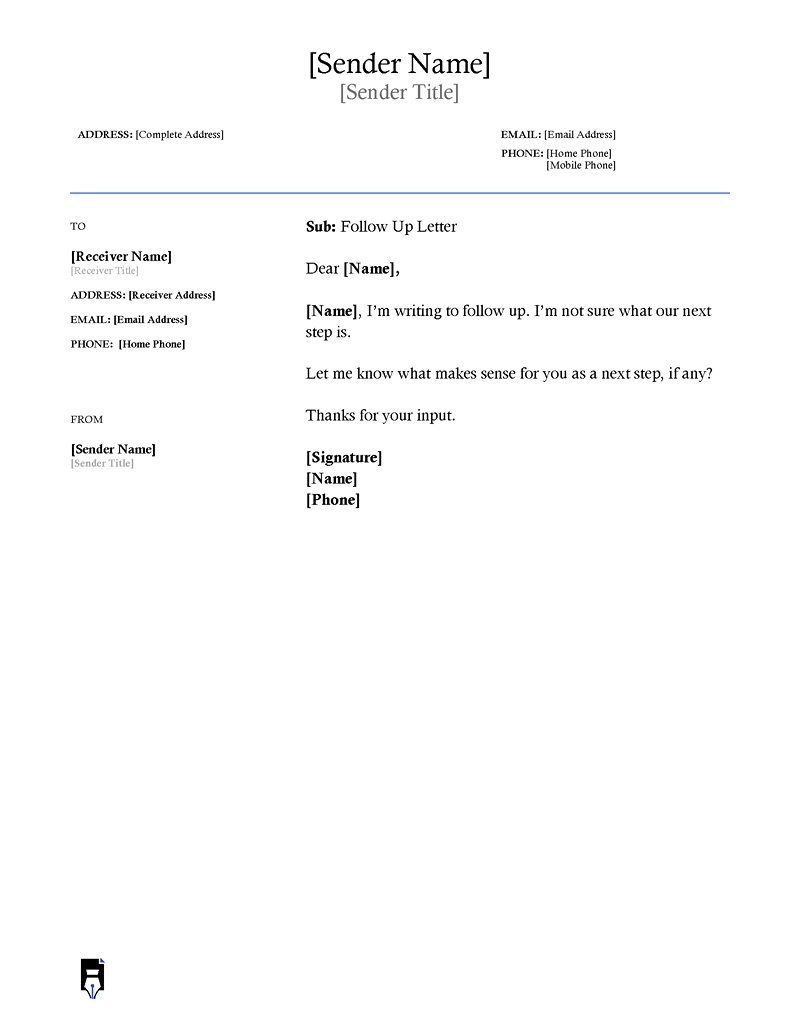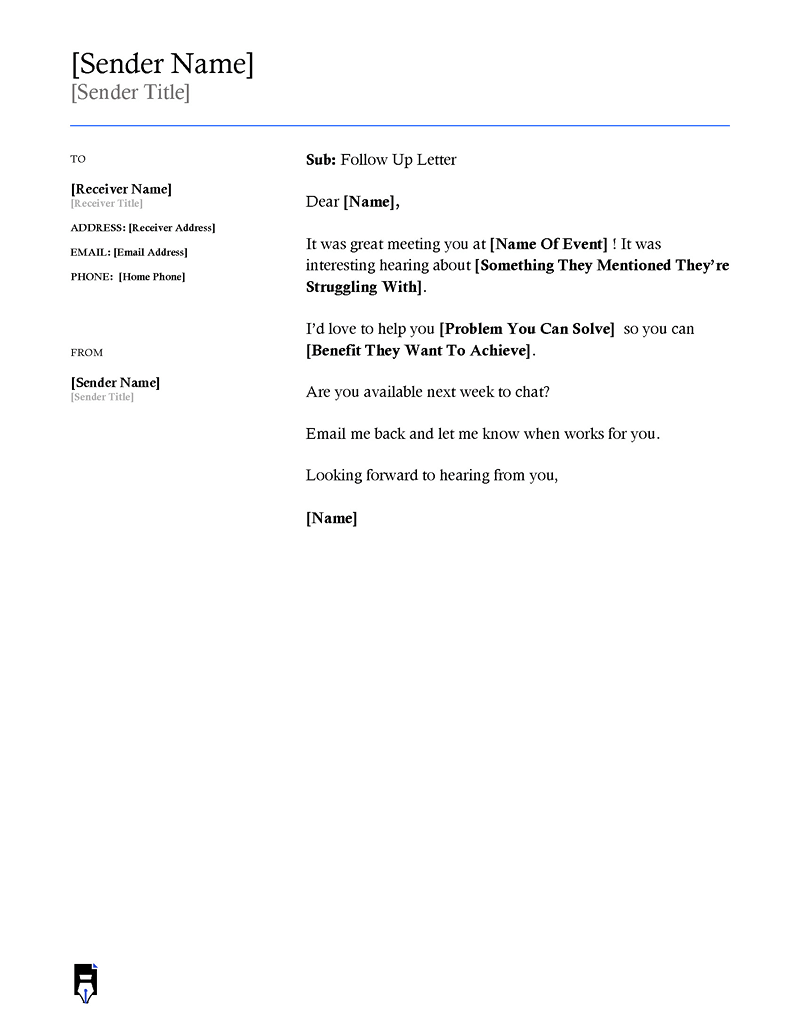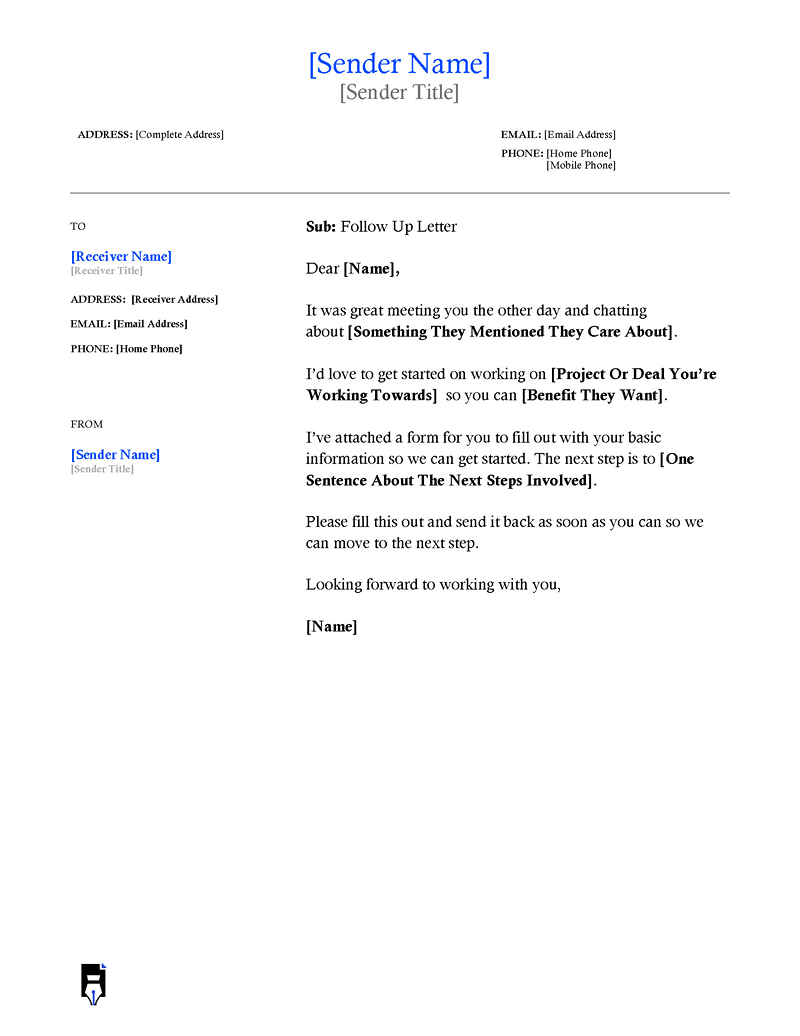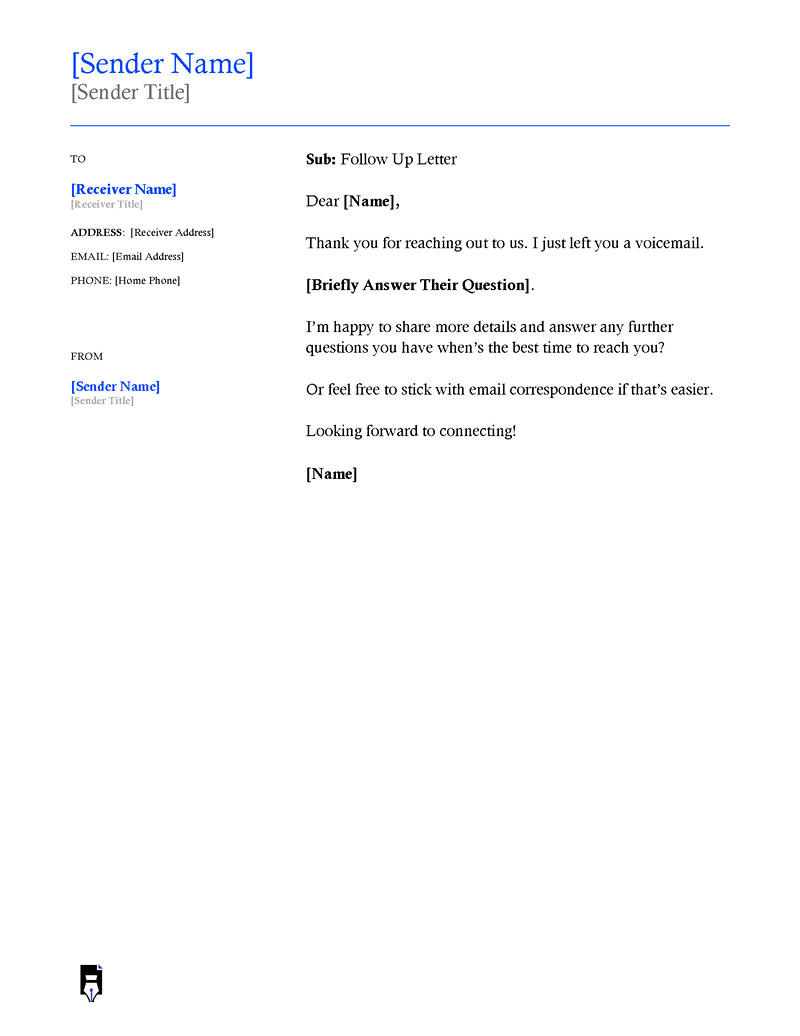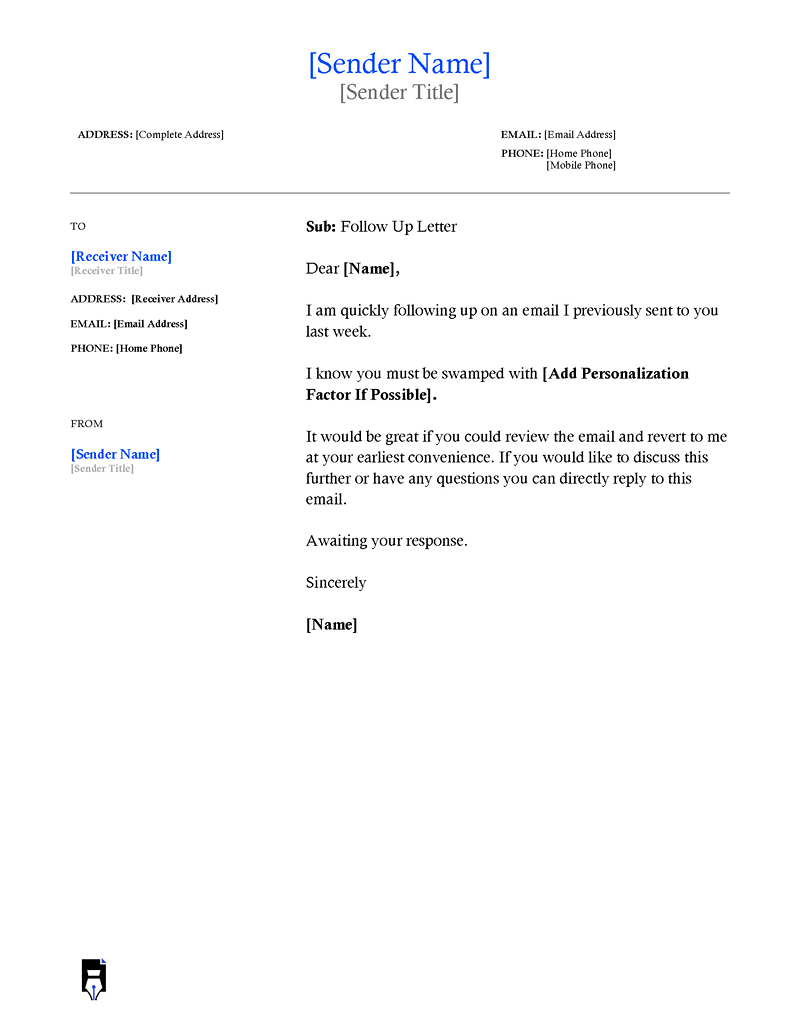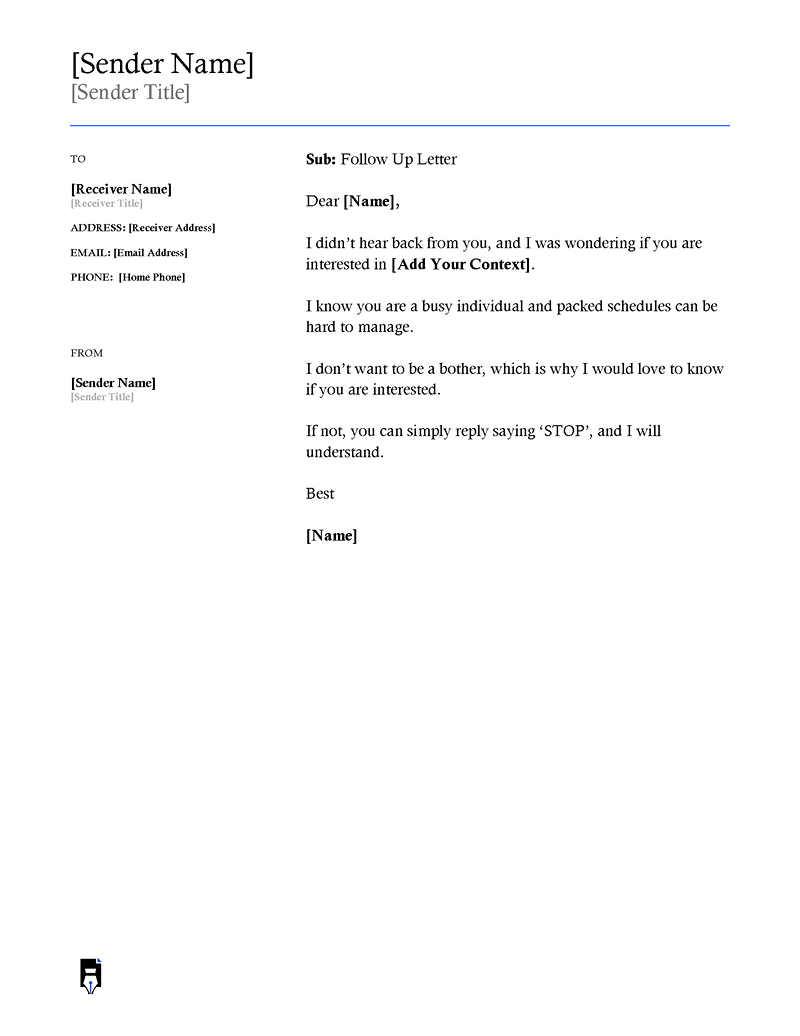Sales and marketing teams often need clarification about how, why, and when to write a follow-up email to potential customers. This article will answer these questions. What follows is an in-depth guide on crafting follow-up emails. In addition to the writing steps, examples, and follow-up email templates, we will cover essential details such as follow-up frequency, subject lines, and other do’s and don’ts of prospect engagement using follow-up emails.
What is a Follow-Up Email?
A follow-up email is a retargeting technique that companies use for various purposes.
It can help you remind prospects to take a particular action, collect feedback from first-time customers, engage cold leads, or reengage passive customers. Companies use them to check in with prospects after a certain point in their customer journey or for a significant event that leads to a purchase. Your approach to writing a follow-up email will depend on your business model, strategy, and objective.
Statistical insight: A single follow-up email can increase your reply rates by 65.8%, but only if it provides value to the prospect, asks the right questions about their experience, and has a crystal-clear call to action.
Follow-Up Email Templates
With proper guidance, crafting a follow-up email should not be daunting. However, even if you have written to your prospects numerous times, it can still be as time-consuming as your first time. Below we have provided free downloadable follow-up email templates that you can customize as per your need so that you do not have to write your emails from scratch every time.
Why and When to Send a Follow-Up Email?
To make your follow-up emails successful, you must assume that your recipients are busy and contact them only if you have a strong reason:
Why
As its name suggests, a follow-up email comes after you fail to engage the prospect for the first time. This second attempt should be a polite reminder to the recipient to provide an answer to the initial question or complete a specific action.
Instead of only sending a reminder, you can use this opportunity to spark interest and catch their attention again. For example, you can provide additional information about your offer, pitch your idea from a different angle, or explain the product’s benefits to the recipient.
When
It is not good to wait too long before sending a follow-up email. Most people read new emails as soon as they receive them. Professionals with cluttered inboxes may need a couple of hours to open a new message, but they typically respond during the first 24 hours. If they do not reply to you the same day, it is usually safe to assume they will not respond.
In this case, you should wait two to three days but not longer. For each subsequent email, the rule of thumb is to double the number of days that have passed between the last two emails. If they do not respond to your first follow-up email, wait another week before you send the second one.
Follow-Up Email Subject Line
A subject line is a text that a recipient can see before opening a new email. A subject line often works as a substitute for the title. It should provide context to what the recipient can expect to read in the email and hint at what the sender wants to achieve.
A subject line for a follow-up up email should provide real value to convince a prospect to click “Read” and open an email, as shown in the following examples:
After no response
- Shall we talk business?
- It takes two to tango.
- Do you have any news for us?
- Do you still like our [product name]?
- Let us cut to the chase.
After an event
- A moment of your time means a lot.
- We have a bunch of ideas for your [business need]
- Are you interested in [related product or service]?
- Let us discuss your future goals.
- Did you find what you have been looking for?
For general follow-ups
- Long time no hear.
- [Prospect’s name], we have a quick question for you.
- Can we do something for you today?
- Five ways to improve your [personal goal].
- Is this the right time to help your [business objective or problem]?
Important statistics: Most people (47%) determine whether to open an email or send it to the trash bin (69%) solely by its subject line, so remember to test each sentence before following up.
How to Write a Follow-Up Email: 4 Easy Steps
Are you writing a follow-up email for the first time, or do you need to improve your email writing skills for a future campaign?
The following step-by-step guide will help you craft an engaging opening line, explain your motives, draft an irresistible CTA, and close your email:
Write a catchy opening line
It is crucial to catch the reader’s attention with the first sentence. The prospect will likely stop reading if your opening line has no value. You should avoid commonplace phrases such as “Just checking in” or “Touching base,” as they sound monotonous and do not speak to the recipient as a person. Instead, try to provide some personalized context as to why you are writing.
A follow-up email is often a reminder of the previous interaction, so you can remind the recipient who you are and what you want. For example, you can add a brief recap of your first email, mention an event or a mutual connection, or refresh their memory if you have met in person.
For example, you can open your follow-up email with the following:
Hello Marlin,
We had a pleasant conversation about croissants on Monday if you remember.
Explain why you are emailing
The decision to send a follow-up email should be strategic and have a clear objective. If you decide to contact a prospect without a specific goal, you risk alienating them.
However, having a specific goal is not enough. You should also explain the reason for writing to the prospect directly using a concise style.
You are sending a follow-up email to retarget the prospect and close the sale, but the prospect does not need to be aware of that. Instead, you should remove your interests from the narrative and discuss what your products and services can do to solve your prospect’s needs and problems.
Here is an excellent example of that:
We have finally added a new time management feature to our software. Your team’s productivity has been slowing down lately, and I think our solution could make a real difference. If you want to know more about how time management can help you, or if you have any questions, I am free to talk tomorrow at 8.
Add a persuasive call to action
A call to action is the second most crucial part of a follow-up email. Just like a subject line and opening sentence help the recipient determine whether or not the email is worth their time, a call to action helps them decide whether or not to act upon it.
A compelling CTA is direct and concise. It tells the recipient what to do next and provides the steps for action. You cannot hope to achieve anything with your follow-up email unless you invite the recipient to do what you want and tell them how to do that quickly and easily.
For example, if you want the recipient to subscribe to your service, you can ask,
Would you like to subscribe right now?
If you want to talk to them, be specific:
Would 9:30 on Wednesday be good for you?
Close your email
The best way to close a follow-up email is to ask for a reply. That is where you can use some common phrases, such as I am looking forward to hearing from you, Let me know what you think, or Contact me at your earliest convenience.
Depending on the unique situation and the recipient, you can choose a less formal phrase, such as Talk to you soon! and personalize the last sentence by adding the recipient’s name or including an inside joke, like See you on Twitter, Elon?
Follow-Up Email Template
Hi [Recipient’s Name],
Many entrepreneurs like yourself face [a business challenge or problem], so I wanted to know if you would be interested in learning more about our [solution]. Based on my experience with your industry, it can help you improve your bottom line by [percentage]. Your competitors are already using it to improve theirs.
I know you are busy, so I have prepared a short explainer. You can find it here: [link].
Take a quick look. If you do not find it helpful, I have a few other ideas for solving your crisis. I have an opening tomorrow at 11 am, so please get in touch with me.
I cannot wait to hear from you,
[Your Name]
Follow-Up Email Sample
Below are two follow-up email samples that you can use for writing your own:
Sample 1
Hello David,
I know you have a crazy schedule, and I promise I would not be bothering you if I was not 100% certain that our social media marketing campaign could help you beat your competitors.
How do I know that? Because I have been in your position a couple of times before. I know that Instagram can be a challenge, especially in your niche.
I also know that omnichannel marketing can boost your reach to at least 2,000 leads EACH MONTH. You only need a data-based strategy and the right kind of automation. I can help you with both.
Think about it. While you are considering it, take a look at this use case: [email protected].
If you are interested in learning more, I can arrange a meeting on the following Monday.
I am expecting your call.
Paul
Sample 2
Hello Linda,
Since our last conversation, I have not heard back from you, so I thought I should reach out to you again. Are you still interested in our intelligent TV package? I want to remind you it is 50% off until next Wednesday.
If you have decided not to go with us, send a “No.”
If you want to talk but are busy now, send “Yes.”
In any case, I appreciate you taking the time to read this email through.
Have a nice day,
David
Do’s and Don’ts
There is a subtle difference between eye-catching follow-ups and standard retargeting emails that nobody reads. An appropriate length and an intriguing subject line can turn an average copy into an outstanding one, but only if you avoid the common pitfalls of writing a follow-up email.
Do’s
These are the best practices for crafting a clickable follow-up email:
- Make it short: Shorter emails show that you are respectful of your recipients’ time. Because of that, and since they are quicker and easier to read, short follow-up emails have a 5.81% better CTR than lengthy emails. You can shorten emails by avoiding elaborate sentences, omitting words with no value, and skipping cliche phrases. The ideal email length is under 100 words.
- Personalize it: There are two ways to personalize your follow-up emails, write each from scratch or use an email automation tool if you have too many recipients. Either way, personalization is crucial for success. However, if you do not have many recipients, it is always better to research every prospect’s needs and problems and appeal to them directly.
- Think of your goal: Before you contact a prospect without any plan, think about how unprofessional that is. As your company’s representative, it is your job to have your prospect’s best interests in mind, so try not to waste their time. Think about what you want to achieve and what you need them to do.
- Pay attention to your subject line: Think about your subject line as a ten-word pitch. To convince the recipient to open the mail and consider your offer, ensure the subject line provides context, speaks directly to the reader, and sparks their interest. Well-crafted subject lines often include a recipient’s name, a persuasive reason for reading, and specific information that catches readers’ attention.
- Diversify your channels: Email is not the only way to contact your prospects. Successful companies rely on the omnichannel approach and interact with potential customers via phone, social media, and videos. Companies that use an omnichannel approach have a 9.5% year-over-year growth in annual revenue.
- Put yourself in the customer’s shoes: Before you send the first draft of your follow-up email, take a moment to read it from the recipient’s perspective and try to answer the question, “What’s in it for me?” A change of perspective will provide invaluable insight into how your prospects feel about you contacting them via email. It will also allow you to choose the right approach, depending on a specific situation and event. For example, you can be more assertive if a prospect has already shown interest in an event. However, your tone should stay formal and restrained if the lead is still cold.
- Assess what you want to achieve: Follow-up emails can help you achieve many different things, such as soliciting feedback from current free trial users, arranging a pitch meeting, or converting a lead into a paying customer. Follow-up emails differ depending on the objective, so ensure you know exactly what you want to achieve.
Don’ts
You will significantly improve your follow-up email if you avoid the following mistakes:
- Avoid using “follow-up” in the subject line: Regardless of the context, adding the word “follow-up” to your email subject line is like using the word “book” for a book title. It wastes valuable space in a line limited to only a few words without saying anything meaningful. Most people will mark an email with a ‘follow-up’ in the subject line as spam. Some customers could conclude that you are blaming them for not responding to the first email.
- Not adding value: You cannot expect prospects to read your email and respond to your CTA just because you felt it was time to “touch base.” They need more than that. Offer them something for their time, such as a new solution or another reason to come back to you for help. Instead of vague marketing talk, give them something valuable.
- Not including a call to action: A follow-up email must have a clear CTA to be valuable. Your recipients have no time to guess your motives or decipher what you want them to do. If you want them to reach out to you, tell them where and when. If you want them to fill out a form, send a link.
- Not following up quickly: The ideal time to wait for a prospect to reply after the first email is two to three days. If you have already prepared a follow-up email, there is no need to wait longer. Chances are that the prospect has seen the first mail but forgot to respond to it. You risk losing momentum after the first email and the event that initially triggered it by waiting longer than three days.
- Avoid sounding passive-aggressive: If you highlight that the recipient did not respond to your previous emails, you risk sounding passive-aggressive. Likewise, showing impatience with phrases like “Just checking in” or “Any updates on this” is inconsiderate. You need to be careful and read your emails out loud before sending them, as these phrases tend to slip in unintentionally. The same goes for sentences that sound too desperate, such as “I apologize in advance for bothering you” or “If it is not too much trouble.”
Frequently Asked Questions
How many follow-up emails should I send?
Keep emailing your prospects even after they stay unresponsive for a couple of attempts, at least until the sixth email. Around 70% of companies stop sending emails after one failed follow-up attempt. The following findings show that they are at a loss:
-The first email has a response rate of 18%.
-This percentage falls to 13% by the fourth email.
-The sixth email has a 27% response rate.
-80% of people say “no” before they say “yes.”
-92% of people give up after getting four “no’s.”
How long should I wait to send a follow-up email?
It is an unwritten rule to wait between two and three days to send a follow-up email.
How do you send a follow-up email to a busy person?
When drafting a personalized follow-up email to your prospect, assume they are busy and adjust your approach accordingly. Show that you respect their time by being direct and concise. Explain why you are writing to them and what you would like them to do next.
How do you follow up without being annoying?
Most prospects think that sending too many emails too often is annoying. Also, they might feel irritated if your emails sound passive-aggressive or too desperate. The best way to find a good measure is to put yourself in your prospect’s shoes and read your emails from their perspective.
Can I automate my follow-ups?
Yes, you can automate your follow-up emails by using email automation software.
